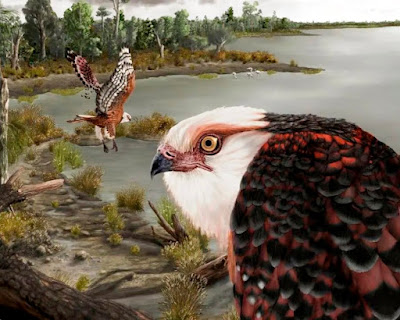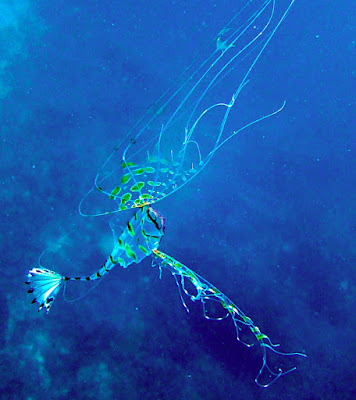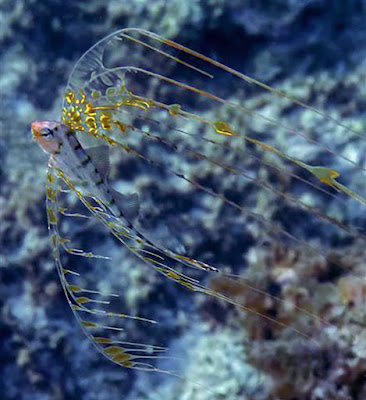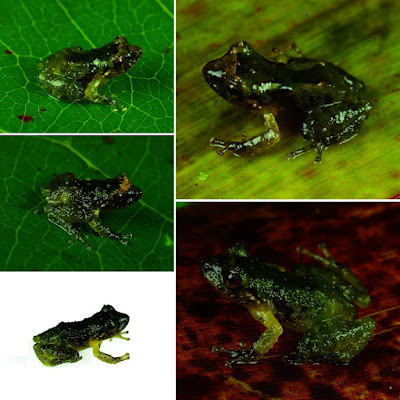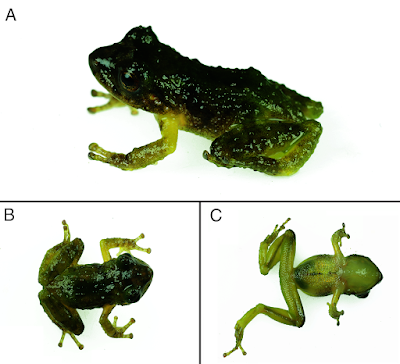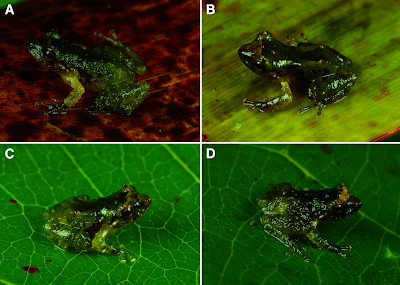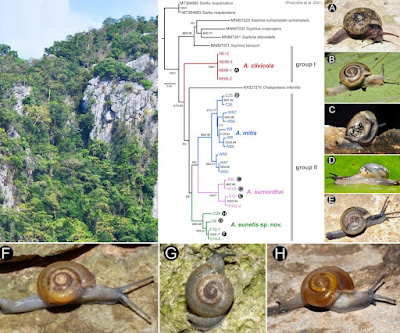[Most Recent Entries] [Calendar View]
Tuesday, September 28th, 2021
| Time | Event | ||||
| 3:51a | [PaleoOrnithology • 2021] Archaehierax sylvestris • An Exceptional Partial Skeleton of A New Basal Raptor (Accipitriformes: Accipitridae) from the late Oligocene Namba Formation, South Australia
ABSTRACT The Australian pre-Pleistocene fossil record of Accipitridae (eagles, hawks, old-world vultures) comprises one latest Oligocene or early Miocene and one middle Miocene species, each represented by partial bones. Globally, most fossil accipitrids are based on single bones. The recent discovery of an older and considerably more complete accipitrid from late Oligocene sediments in Australia is therefore significant. It is derived from the Pinpa Local Fauna from the Namba Formation at Lake Pinpa, South Australia (~26–24 Ma). The fossil, described as Archaehierax sylvestris gen. et sp. nov., represents a raptor that was larger than the black-breasted buzzard Hamirostra melanosternon but smaller and more gracile than the wedge-tailed eagle Aquila audax. Comprehensive morphological and molecular phylogenetic analyses resolved Archaehierax as a basal accipitrid, not closely related to any living subfamily and perhaps the sister taxon to all other accipitrids exclusive of elanines. Relatively short wings similar to species of Spizaetus and Spilornis suggest it was adapted for flight within enclosed forests. Additional accipitrid fossils from the Namba Formation, a distal femur and a distal humerus, are incomparable with the holotype of A. sylvestris; they may represent distinct species or smaller individuals of the new taxon. KEYWORDS: Lake Pinpa, Accipitriformes, Cenozoic fossil birds, accipitrid evolution, Australia
Systematic palaeontology Class Aves Linnaeus, 1758 Order Accipitriformes Vieillot 1816 Family Accipitridae Vigors, 1824 Subfamily: Archaehieraxinae subfam. nov. Type genus: Archaehierax gen. nov. Remarks: The fossil is identified as an accipitrid due to the following combination of characters: Skull – Rostrum deep and narrow, with hooked tip and a large, broad nasal aperture; Tibiotarsus – Pons supratendineus ossified, aligned steeply transversely, medially placed, with unbranched canalis tendinosus, and distal condyles much wider than craniocaudally deep; Tarsometatarsus – Robust, with monosulcate hypotarsus, the lateral and medial hypotarsal crests widely separated and trochleae metatarsorum splayed both medially and laterally, and dorsally arched in distal view; Foot – Four digits with raptorial unguals, those of digits 1 and 2 relatively large; Digit IV – phalanges 2 and 3 are very short compared to phalanx 4. The fossil can be excluded from Falconiformes (Falconidae) and the other families of Accipitriformes (Cathartidae, Sagittariidae, Pandionidae) by the morphology of the tarsometatarsal hypotarsus cristae and sulcus. The cristae are fused or partially fused together to enclose the sulcus in Cathartidae, Sagittariidae, and Pandionidae, while in Falconidae the medial crista is connected to the shaft by a ridge that extends two-thirds of its length, features that are absent in the fossil. Diagnosis: Accipitrids in which the following autapomorphic features are found: the pila medialis of the sternum dorsally separates two deep pneumatic fossae, the humerus has the caput humeri only slightly elevated proximally past the tuberculum ventralis, the tip of the processus procoracoideus of the coracoid sharply curves inwards ventrally towards the medial face of the bone, the tibiotarsus has the lateral/distal retinaculum scar in a deep fossa, the tarsometatarsus is relatively elongate with narrow trochleae metatarsorum that are separated by wide incisurae, and the incisura for the m. flexor hallucis brevis tendon is large, distinct, and extends distal to the fossa metatarsi I. In addition to this, the following features occur: the rostral tip of the rostrum is hooked below the tomial margin at a relatively shallow 30–40° angle, the quadrate has a deep, distinct foramen pneumaticum caudomediale, and the sternum has the apex carinae displaced caudally from the base of the spina externa., Genus Archaehierax Mather, Lee, Camens and Worthy gen. nov. Etymology: Archaehierax is derived from the Greek words ‘archaios’, meaning ancient, and ‘hierax’, meaning hawk. Gender masculine. Archaehierax sylvestris Mather, Lee, Camens and Worthy gen. et sp. nov. Etymology: The species name ‘sylvestris’ is derived from the Greek world ‘sylvas’, meaning forest, and the Latin suffix ‘-estris’, meaning ‘belonging to’. Ellen K. Mather, Michael S. Y. Lee, Aaron B. Camens and Trevor H. Worthy. 2021. An Exceptional Partial Skeleton of A New Basal Raptor (Aves: Accipitridae) from the late Oligocene Namba Formation, South Australia. Historical Biology: An International Journal of Paleobiology. DOI: 10.1080/08912963.2021.1966777 25-million-year-old ancient eagle ruled the roost in Australia 63 bone fossil finding in desert is one of the “best preserved” eagles ever and a very rare discovery | ||||
| 3:15p | [Ichthyology • 2021] A Taxonomic Review of the Family Trachipteridae (Acanthomorpha: Lampridiformes), with An Emphasis on Taxa Distributed in the western Pacific Ocean Abstract The family Trachipteridae—the Ribbonfishes, Dealfishes, and their relatives—has a circumglobal distribution, with at least 10 species in three genera (Zu Walters & Fitch 1960, Desmodema Walters & Fitch 1960, and Trachipterus Goüan 1770) that are characterized by elongate, extremely laterally compressed bodies, large eyes, absence of ribs, spines on lateral-line scales, greatly protrusible mouths, and a lack of pelvic fins in adults. They are also known for the drastic morphological changes that occur during ontogeny. Trachipterids are poorly represented in collections due to the fragile nature of their bodies. Most studies of the Trachipteridae have been limited by the numbers, developmental stages, and the completeness of the specimens that were examined. Along with the lack of available material, incomplete and conflicting character information compounds the taxonomic confusion of Trachipteridae. Despite the body of regional revisions that have examined trachipterid taxonomy, none have synthesized a suite of morphological characters across ontogeny. The goals of this paper are to (1) revise the family Trachipteridae, (2) revise the genera Trachipterus, Zu, and Desmodema, including information regarding ontogeny and biogeography, and 3) address the alpha taxonomy of Zu, Desmodema, and Trachipterus from the western Pacific Ocean. We recognize possibly five species of Trachipterus as being present in the western Pacific, as well as two species of both Zu and Desmodema. Despite additions to the specimen base that allows refinement of taxonomy and diagnoses, there are still large knowledge gaps associated with the taxonomic review of Trachipteridae. These reflect incomplete understanding of geographic distribution of taxa which may mask unrecognized taxonomic variability. The genus Trachipterus specifically remains problematic and will require greater detailed global study. Early life history stages remain unknown for several taxa which hinders full interpretation of ontogenetic transitions. Protracted transitions, some of which are clarified here, further confuse stage-based diagnoses and must be considered in future analyses of this family. Keywords: Pisces, Ribbonfishes, Trachipterus, Desmodema, Zu, ontogenetic characters Order Lampridiformes Goodrich 1909 Family Trachipteridae Swainson 1839 Ribbonfishes, Dealfishes Trachipterus Goüan 1770 Putatively valid taxa in the western Pacific Ocean 1. Trachipterus trachypterus (Gmelin 1789). Holotype: No types known. Mediterranean. 2. Trachipterus altivelis Kner 1859. Syntype: NMW 22046. Valparaiso, Chile. Unavailable for examination in current study. 3. Trachipterus arawatae Clarke 1881. Holotype NMNZ P.1008, 51 cm SL. Hominy Cove, Jackson’s Bay New Zealand. Examined. 4. Trachipterus jacksonensis (Ramsay 1881). Syntype: AMS A.9114, 1408 mm, caudal missing (736 mm SV). Manly Beach, Port Jackson, New South Wales, Australia. Examined. 5. Trachipterus ishikawae Jordan & Snyder 1901. Holotype: NSMT 589, 1250 mm SL. Off the mouth of Tokyo Bay, between Misaki and Boshu. Examined.
Zu Walters & Fitch 1960 Zu cristatus (Bonelli 1820) Zu elongatus Heemstra & Kannemeyer 1984 Desmodema Walters & Fitch 1960 Desmodema polystictum (Ogilby 1898) Desmodema lorum Rosenblatt & Butler 1977 Conclusions: Despite advances in the understanding of Trachipteridae resulting from tremendous additions to the specimen base, which have allowed for the refinement of the taxonomy and diagnoses within the family, there are still large knowl-edge gaps associated with the taxonomy of the family. These reflect incomplete understanding of geographic dis-tribution of taxa that may mask unrecognized taxonomic variability. The genus Trachipterus specifically remains problematic and will require greater detailed global study. Early life history stages remain unknown for several taxa, which hinders full interpretation of ontogenetic transitions. Protracted transitions, some of which are clarified here, further confuse stage-based diagnoses and must be considered in future analyses of this family. Jennifer M. Martin and Eric J. Hilton. 2021. A Taxonomic Review of the Family Trachipteridae (Acanthomorpha: Lampridiformes), with An Emphasis on Taxa Distributed in the western Pacific Ocean. Zootaxa. 5039(3); 301-351. DOI: 10.11646/ZOOTAXA.5039.3.1 | ||||
| 3:17p | [Herpetology • 2021] Pristimantis achupalla • A New Minute Species of Direct-developing Frog (Anura, Strabomantidae) inhabiting Bromeliads of the Montane Forest of the Amazonian Andes of Puno, Peru
Abstract We describe a new species of bromeliad-dwelling Pristimantis from primary montane forest (2,225 m a.s.l.) in southern Peru. The type locality is near Thiuni, in the Department of Puno (province of Carabaya) in the upper watershed of a tributary of the Inambari River. Pristimantis achupalla sp. n. is characterized by a snout-vent length of 10.0–12.8 mm in adult males (n = 4), unknown in adult females, and is compared morphologically and genetically with species in the Pristimantis lacrimosus group, and with other similar species of Pristimantis. The new species is characterized by having skin on dorsum and flanks rugose, green brownish color, distinctive scapular folds, subacuminate or acuminate snout profile, upper eyelid bearing two or three subconical tubercles and some rounded tubercles, rostral papilla, flanks light brown to brown, with irregular dark brown marks.
Pristimantis achupalla sp. n. Definition: The new species is distinguished by the following combination of characters: (1) skin on dorsum rugose, that on venter areolate, discoidal fold absent, dorsolateral folds absent; (2) tympanic membrane differentiated, tympanic annulus visible, slightly robust supratympanic fold covering dorsal and posterior edges of tympanum; (3) snout acuminate in dorsal view, truncated and posteroventrally inclined in lateral view, canthus rostralis weakly concave in dorsal view, angular in lateral view, loreal region concave, rostral papilla present; (4) upper eyelid bearing two or three subconical tubercles and some rounded tubercles, cranial crests absent, and postrical turbercles present; (5) dentigerous process of vomers absent; (6) males with vocal sacs and vocal slits, nuptial excrescences absent; (7) Fingers I and II of equal length, fingers II and III bearing rounded discs about 1.2 times wider than digits, Finger IV bearing a rounded disc about twice as wide as its digit; (8) fingers with narrow lateral fringes; (9) antebrachial tubercle present; (10) ulnar and tarsal tubercles present (11) inner metatarsal tubercle oval twice as long as round outer metatarsal tubercle, low supernumerary plantar tubercles at the base of toes I, II, and III; (12) toes with narrow lateral fringes, webbing absent, Toe V longer than Toe III; (13) in life, males with dorsum brownish green; canthal stripe brown extending to the orbits; dorsolateral stripe brown; throat and belly pale green; groins, posterior surfaces of thighs, and shanks bright pale green; iris bronze with fine black reticulations; (14) SVL in adult males 10–12.8 mm; SVL in females unknown. Etymology: The name of the new species is a Quechua noun, used in apposition, “achupalla” = bromeliads, in reference to the use of bromeliads as its microhabitats. Conclusions: We describe a new species of terrestrial breeding frog in the genus Pristimantis. We justify the generic location-based on morphological similarity and phylogenetic analyses. The new species P. achupalla is nested within the P. lacrimosus group and is closely related to an undescribed species P. sp. from Peru, P. amagunae, P. sp. from Ecuador, and P. bromeliaceus. These species of minute, bromeliad-living frogs form a clade well supported in the phylogeny. Additionally, several meristic traits distinguish P. achupalla from similar species in P. lacrimosus group. We discuss the difficulty of justifying the position of P. achupalla within groups such as P. lacrimosus, but we also confirm the evolutionary unicity of P. achupalla which supports our taxonomic decision to describe it as new species. Our contribution increases the knowledge of the rich diversity of terrestrial breeding frogs found at high elevations on the eastern slopes of the Cordillera de Carabaya. Alex Ttito and Alessandro Catenazzi. 2021. Pristimantis achupalla sp. n., A New Minute Species of Direct-developing Frog (Amphibia, Anura, Strabomantidae) inhabiting Bromeliads of the Montane Forest of the Amazonian Andes of Puno, Peru. PeerJ. 9:e11878. DOI: 10.7717/peerj.11878 | ||||
| 3:19p | [Mollusca • 2021] Aenigmatoconcha eunetis • Systematic Revision of the Limestone Karst-restricted Land Snail Genus Aenigmatoconcha (Eupulmonata: Helicarionidae), with Description of A New Species
ABSTRACT Thai limestone karsts are known to contain a rich biodiversity of animals, especially terrestrial snails, but still require further intensive exploration to evaluate their biodiversity. To date, only a few studies on the limestone karst-inhabiting land snail genera have been published. The present work focuses on the species diversity and phylogenetic relationships of the limestone karst-restricted land snail genus Aenigmatoconcha from Thailand, based on comparative morphology and molecular evidence. The results yielded three known species (A. clivicola Tumpeesuwan & Tumpeesuwan, 2017, A. sumonthai Tumpeesuwan & Tumpeesuwan, 2018, and A. mitis (Pfeiffer, 1863) comb. nov.), plus a new species (A. eunetis Pholyotha & Panha sp. nov.). The phylogenetic analyses of partial fragments of the mitochondrial cytochrome oxidase c subunit I (COI) gene confirmed the monophyly of all recognized species and congruence with the traditional morphology-based species designations. Average uncorrected p-distances of COI sequences between species were 9.7–12.0% and within species were 0.2–4.2%. This study also provides the re-description of penial sculpture, penial sheath, flagellum, penial caecum, and mantle lobe morphology that were neglected from the type species description. The present discovery of a new species increases the known diversity of Thai land snails and will support the conservation planning to protect karst biodiversity. Keywords: Endemic, Indochina, limestones, COI gene, DNA barcoding  Arthit Pholyotha, Chirasak Sutcharit, Piyoros Tongkerd and Somsak Panha. 2021. Systematic Revision of the Limestone Karst-restricted Land Snail Genus Aenigmatoconcha (Eupulmonata: Helicarionidae), with Description of A New Species. European Journal of Taxonomy. 767(1), 55-82. DOI: 10.5852/ejt.2021.767.1487 |
| << Previous Day |
2021/09/28 [Calendar] |
Next Day >> |
